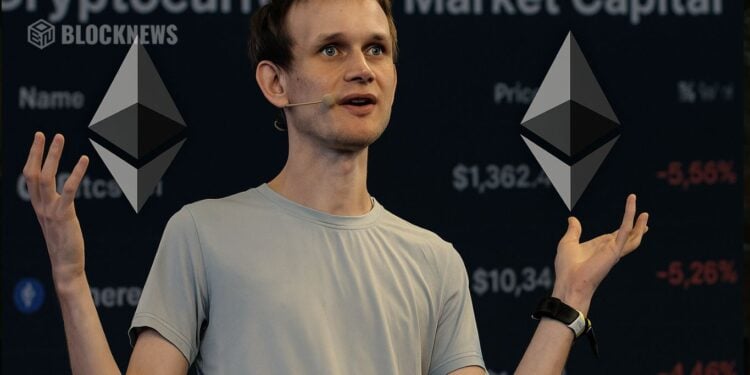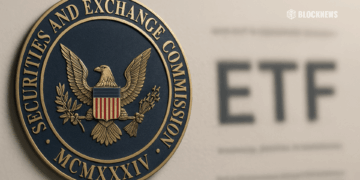- ETH blasted past $4,300, fueled by $1B+ ETF inflows and record institutional demand.
- Staking rewards, shrinking supply, and upgrades like Fusaka + sharding strengthen the long-term case.
- Analysts say $10K ETH isn’t just hype—momentum, utility, and infrastructure make it a realistic target.
Ethereum has been quiet for a while, but that silence just broke—loudly. ETH roared past $4,300, marking its highest level since late 2021, and suddenly the market’s buzzing again. Headlines are calling it a comeback. Traders are whispering the same number: $10,000 ETH. Outrageous? Maybe. But here’s the thing—there’s real substance under the hype this time. Institutional money is flooding in, ETFs are breaking records, and Ethereum’s upgrade pipeline is packed. Even Vitalik’s chiming in with a vision that feels bigger than any single market cycle.
So let’s unpack this. What’s actually driving the surge? Why are institutions rushing into ETH like never before? What upgrades are on the horizon? And most importantly—does $10K sound crazy, or is it closer than people think?
ETH’s Breakout: What Just Happened
Ethereum didn’t just drift higher—it ripped through resistance. Closing above $4,300 for the first time in more than three years, ETH cemented its strongest weekly finish since December 2021. For traders, this wasn’t just another green candle—it was the kind of breakout that signals a shift in momentum.
Institutional flows were the spark. Over $1 billion poured into spot ETH ETFs in just two days (August 11–12), with BlackRock and Fidelity leading the charge. Trading volumes hit $2.7 billion in a single day, a record for Ethereum ETFs, showing serious conviction from big players.
And it’s not just ETFs. Macro tailwinds are helping, too. A new executive order allowing 401(k) retirement funds to allocate to crypto opened the floodgates of fresh institutional capital. Futures activity is surging as well—CME’s ETH futures open interest climbed from $2.9B in June to over $5.2B in July. The message? Institutions aren’t dabbling anymore. They’re loading up.
Why Institutions Are Going All-In
Here’s what’s different now: institutional money isn’t speculating—it’s allocating. ETFs gave traditional funds exactly what they needed: a clean, regulated way to gain ETH exposure without touching wallets or exchanges. And they’re wasting no time.
BlackRock’s iShares Ethereum Trust and Fidelity’s ETH Advantage ETF have already seen inflows that rival the early days of Bitcoin ETFs. Pension funds, endowments, even conservative
wealth managers are treating ETH as a core portfolio asset. That’s a major shift. Just a few years ago, Ethereum was dismissed as “too risky” for institutional mandates.
There’s also a kicker Bitcoin doesn’t have—staking rewards. Institutions that hold ETH can lock it up for yield, meaning more supply comes off the market just as demand ramps higher. Pair that with multi-year holding horizons, and you get a recipe for tightening supply and building long-term stability. When this kind of money commits, it doesn’t flip in and out—it sits. That’s bullish pressure that retail alone could never create.
The Upgrade Pipeline: Fusaka and Beyond
Price action isn’t the whole story. Ethereum’s roadmap is stacked with upgrades designed to scale, cut costs, and keep the network future-proof. The biggest headline is Fusaka, a proposed replacement for the Ethereum Virtual Machine. The idea? Make Ethereum faster, more modular, and easier to build on without sacrificing decentralization.
Alongside Fusaka, Ethereum devs are working on Danksharding optimizations, which will massively improve rollup efficiency and data availability. Translation: cheaper transactions, faster execution, and more space for DeFi, NFTs, and tokenized assets.
Other upgrades are aimed at smoothing user experience. Account abstraction could make wallets simpler for everyday users, while staking mechanics are being fine-tuned for better decentralization and security. Put it all together, and Ethereum looks like a chain gearing up for mass adoption—not just surviving another bull cycle.
Vitalik’s Vision: Building for Generations
Vitalik Buterin isn’t just looking at this cycle. In recent comments, he stressed that Ethereum’s base layer must evolve if it’s going to be the settlement hub of the decentralized economy. Fusaka lines up with that vision—a flexible execution model that keeps Ethereum relevant even as Layer-2s carry most of the transaction load.
He’s also pushing for accessibility without losing decentralization. That means simpler wallets, stronger privacy protections, and staking mechanisms that resist centralization—even as institutional players pile in. For Vitalik, these aren’t luxuries, they’re survival features if Ethereum’s going to handle billions of users in the decades ahead.
This mindset—thinking in decades, not cycles—is part of why investors are treating ETH less like a trade and more like digital infrastructure. It’s the difference between short-term hype and long-term conviction.
Can ETH Really Hit $10K?
At first glance, $10,000 ETH sounds like moonboy chatter. But stack the fundamentals, and it doesn’t look so far-fetched.
- Institutional flows: billions pouring into ETFs, with investors who hold for years.
- Shrinking supply: staking locks up ETH, ETF custodians remove more from circulation.
- Upgrades: Fusaka, sharding, account abstraction—Ethereum is evolving for scale.
- Adoption: DeFi, NFTs, tokenized real-world assets—all built on ETH’s rails.
Historically, once ETH breaks its all-time high, momentum feeds on itself. A push through $6K or $7K could ignite FOMO, sending prices into uncharted territory. In that environment, $10K becomes less of a “crazy dream” and more of a logical target.
The psychology matters, too. Bitcoin already proved ETFs can drive price discovery. Ethereum is next—and with staking plus institutional conviction, the setup might be even stronger.
Final Thoughts: Ethereum’s Next Chapter
Ethereum isn’t just enjoying a rally—it’s entering a new era. Institutional demand is real, ETF flows are massive, and the network’s upgrade roadmap points toward a scalable, user-friendly future. This isn’t 2017’s ICO boom or 2021’s NFT summer. It’s deeper. It’s utility, legitimacy, and infrastructure-level growth all rolled into one.
The $10K question is no longer about possibility—it’s about timing. Whether it takes a year, a cycle, or less, the foundation is there. Ethereum isn’t chasing Bitcoin anymore. It’s carving out its own role as the backbone of decentralized finance and the settlement layer of the internet’s next phase.
For anyone paying attention, this doesn’t feel like the end of Ethereum’s story. It feels like the start of its biggest chapter yet.














